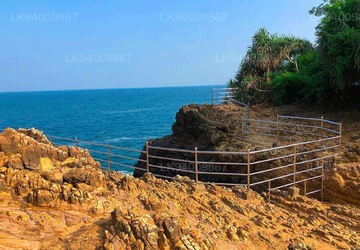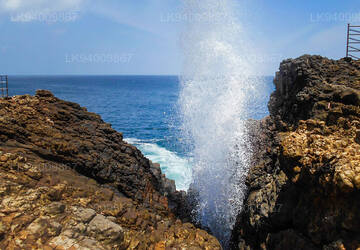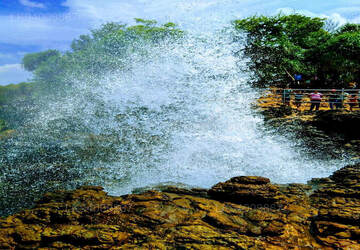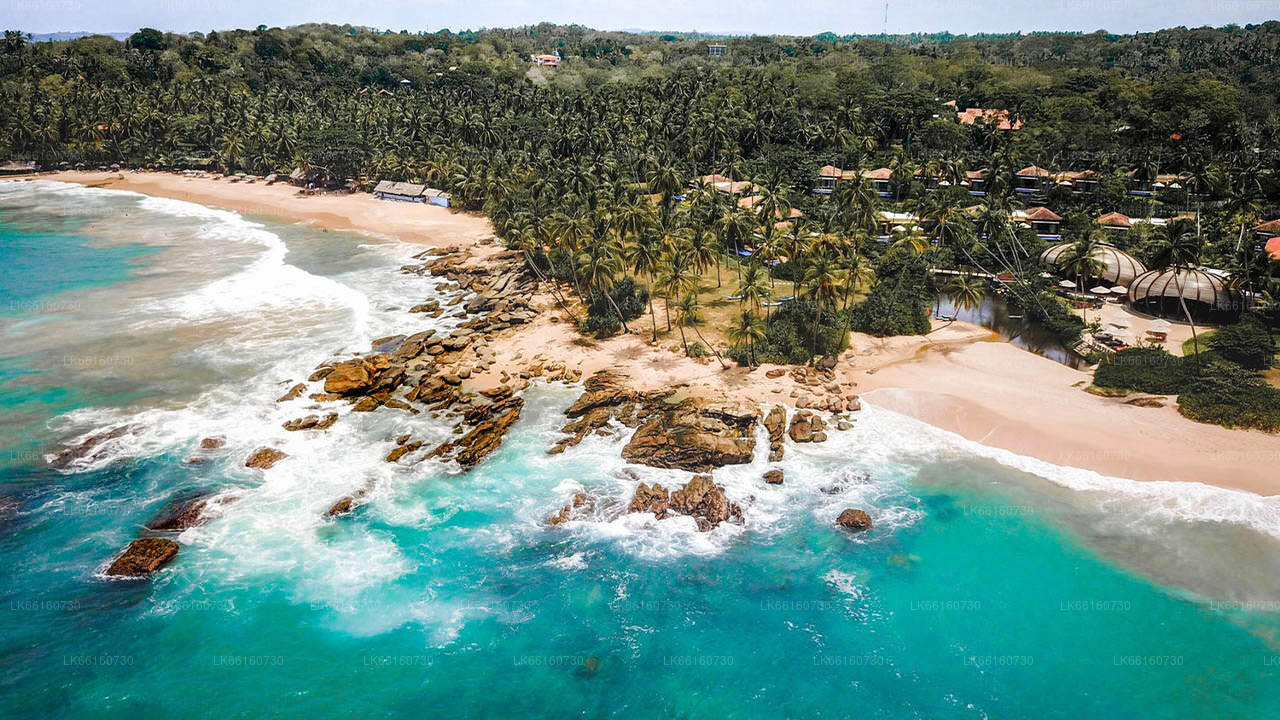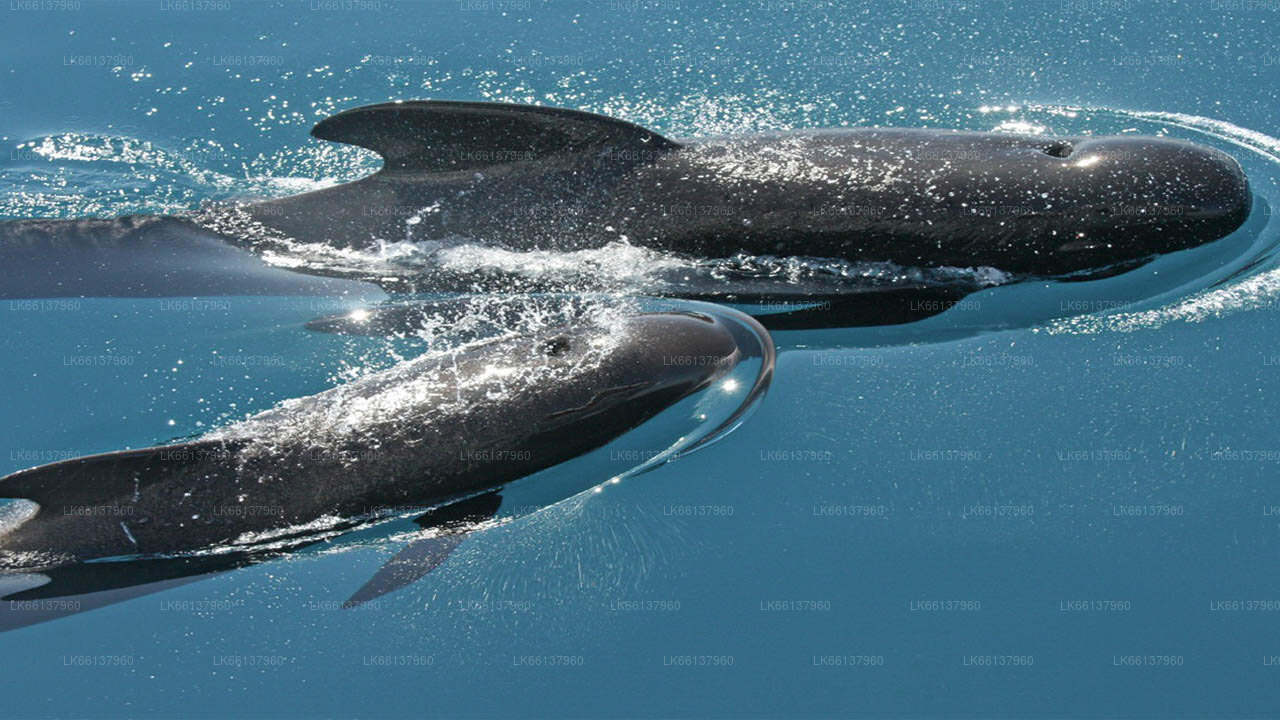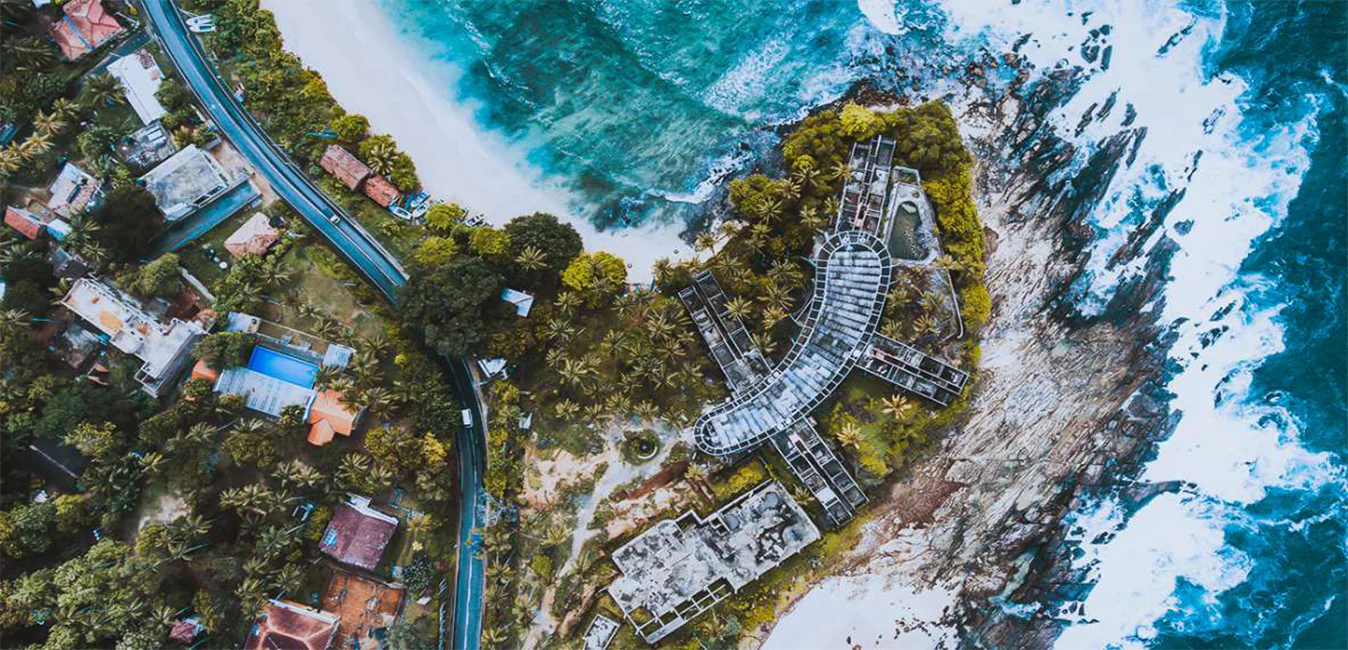
Tangalle City
Strung out along one of the South's most stunning stretches of coastline, TANGALLE (or Tangalla) is among the region’s more developed beach destinations, with a string of simple guesthouses – and a handful of upmarket hotels and villas – dotted along the coves and beaches which line the oceanfront here.
Hummanaya Blow Hole
A blowhole is a geological feature sometimes found along coastal regions. The phenomenon occurs when the tide fills underwater caverns with seawater. The caverns are caused by a geological process of shoreline erosion. This can happen through ‘hydraulic action’ where the waves cause pressure on the airpockets within the little cracks in the cliff, widening them further; ‘abrasion’ or ‘corrasion’ caused by the waves bashing rocks, pebbles, sand and other material into the cliff; chemical weathering caused by the acid content in seawater, especially lethal to rock compositions such as limestone; and ‘attrition’, a sandpapering effect caused by small loose circular rock debris. If the caverns have an aboveground opening; the pressure causes the water to push out periodically in a fountain, or ‘blow’. The timing and height of the water fountains from these blowholes are dependent on the tides and wave formations.
Whilst there are many blowholes all over the world, and especially along the European coast; Sri Lanka only has one known blowhole. It’s near Kudawella, a small fishing village in the Southern Province. Hummanaya can be reached by crossing over a tombolo; a piece of land that is created when deposition of sand or gravel occurs, connecting an island to the mainland. This blowhole has achieved fame amongst visitors to the island, as it is believed to the second largest blowhole around the world. Named after the strong humming sound that it produces while active; Hummanaya Blowhole can shoot up to a height between 25 ~ 30m.
About Hambantota District
Hambantota is a rural town in southeastern coastal area of Sri Lanka. It is also the capital of the Hambantota District in the Southern Province of Sri Lanka. Approximately 240 kms from Colombo, Hambantota is in the midst of transformation into a strategic port and commercial centre, undergoing extensive infrastructure development. Flanked by sweeping sandy beaches, Hambantota is a convenient location from which to visit nearby sights.
The Bundala National Park lays 20 km east of Hambantota and the Weerawila Sanctuary a little further off. The Ruhuna National Park and the Kataragama Temple are other attractions that can be accessed easily from this city.
About Southern Province
The Southern Province of Sri Lanka is a small geographic area consisting of the districts of Galle, Matara and Hambantota. Subsistence farming and fishing is the main source of income for the vast majority of the people of this region.
Important landmarks of the Southern Province include the wildlife sanctuaries of the Yala and Udawalawe National Parks, the holy city of Kataragama, and the ancient cities of Tissamaharama, Kirinda and Galle. (Although Galle is an ancient city, almost nothing survives from before the Portuguese invasion.) During the Portuguese period there were two famous Sinhalese poets called Andare who was from Dickwella and Gajaman Nona who was from Denipitiya in Matara District, composing poems on common man.





